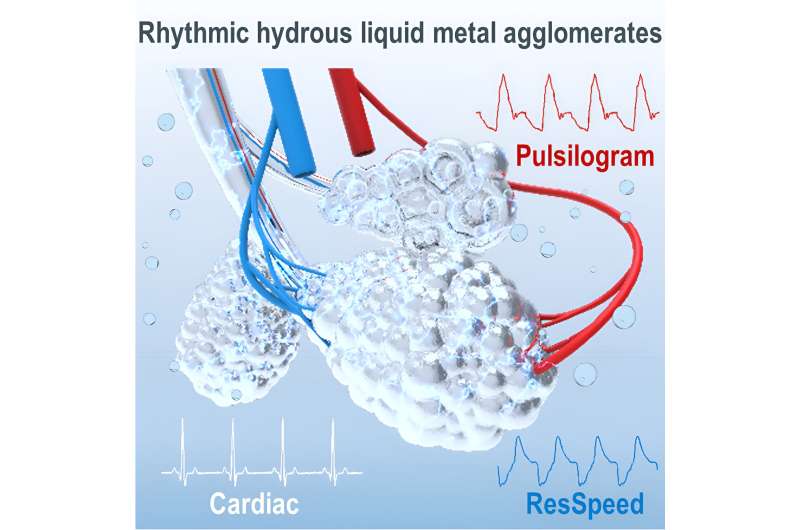This article has been reviewed according to Science X's editorial process and policies. Editors have highlighted the following attributes while ensuring the content's credibility:
fact-checked
peer-reviewed publication
trusted source
proofread
Scientists develop hydrous liquid metals for use in rhythmic bionic tissues

In a new study published on July 27 in Matter, a research group led by Prof. Liu Jing at the Technical Institute of Physics and Chemistry of the Chinese Academy of Sciences, together with collaborators from Tsinghua University, has made a breakthrough in creating biotissue-like rhythmic agglomerates via two inanimate liquid materials, water and liquid metals assembled from the ground up.
Biotissues are interesting systems. They have been imitated by various materials, but never surpassed. The most fundamental and important problem for many existing biomimetic entities is their lack of aqueous properties and biorhythms to manage their physiological functions.
To solve this long-standing problem, the researchers introduced the synergistic mechanism of in situ reduction and electrochemical welding so that the as-manufactured hydrous liquid–metal agglomerates (HLMAs) could maintain their structural features during cellular-like growth, floating, and systolic and diastolic rhythms, thus resembling the physiological scene of a "brain in a vat."
The core principle is that the reversible redox sparks the rhythm of HLMAs, which undergo rhythmic variation in physical properties while achieving systolic and diastolic rhythms, just as biotissues do during heartbeat and respiratory fluctuations.
The researchers demonstrated the unique capacity of liquid matter to generate biorhythms due to its intrinsic aqueous features and spatiotemporal attributes.
The rhythmic synergy of HLMAs is revealed to be dependent on variations in matter, electrochemical energy conversion, and information transfer.
With their endowed rhythmic nature, HLMAs offer a new paradigm for the fabrication of metallic bionic tissues that may closely mimic or even transcend biotissues in the coming years.
This study is expected to be a starting point for bridging the gap between artificial matter and natural biotissues, while also offering broad opportunities for the development of increasingly advanced soft robotic systems such as artificial beating hearts, respiring lungs, liquid intelligence, and ultimately Terminator-like robots.
More information: Jianye Gao et al, Biotissue-like rhythmic hydrous liquid-metal agglomerates, Matter (2023). DOI: 10.1016/j.matt.2023.06.042
Journal information: Matter
Provided by Chinese Academy of Sciences


















